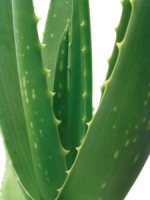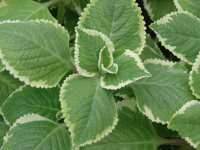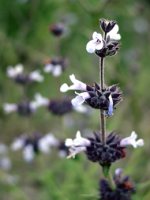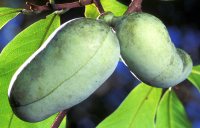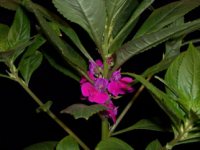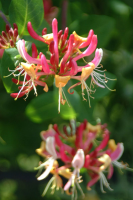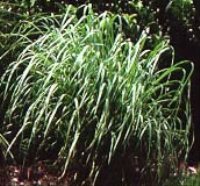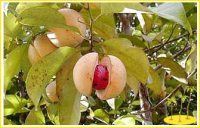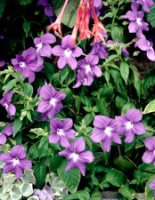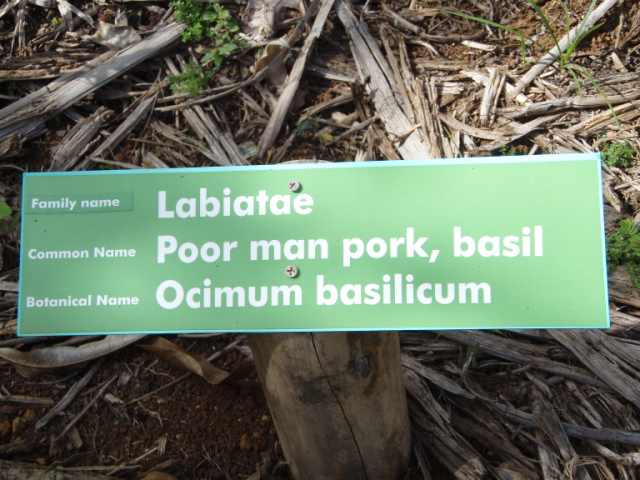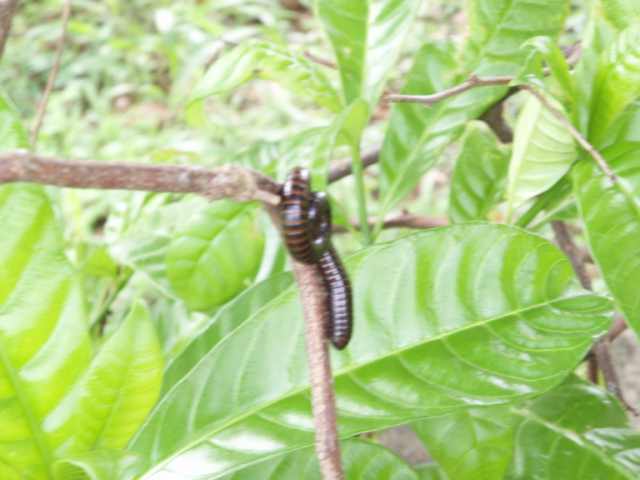Laura Spice Garden

|
Laura Spice and Herb Gardens
We stopped at Laura Spice and Herb Garden and paid the £2.50 entry. Our guide was a young lady who knew her stuff. She said it was easy to remember all the plants and their uses as "everyone grow up learnin' 'em". She made us crush, squeeze, rub, sniff and guess.
All Spice, Aloe, Big Thyme, Black sage and Bois Bande
All Spice, Pimento, Diocica
Mytaceae Uses: All
Spice is grown on a small scale in Grenada when compared to Jamaica. It is
believed however, that all spice has the aroma of both nutmeg and clove put
together. Used to flavour meat, fish, shellfish, soups, etc. Reminded us of
Christmas Cake.
Aloes, Aloe Vera,
Liliaceae
Big Thyme, Coleus Amboinicus,
Myrtaceae
Black Sage, Cordia Cuiassavica,
Boraginaceae
Bois Bande, Roupala Mantana,
Proteacea
Bois D'Inde or Bay Leaves, Pimenta Racemosa, Myrtaceae Uses: The spice is found throughout the Caribbean, South and Central America and many countries throughout the world. The product bay rum is made from oils known as "myrcia" or bay oil which is distilled from the bark, leaves and twigs. Bay rum is used as a rub for rheumatism, colds, etc. A refreshing tea from leaves is used for chills and trapped wind, leaves are also mixed with other herbs to ease afterbirth pains.
Caca Beche, Senna Bicaosularis,
Leguminosea
Casse,
Cassia Fistula, Leguminosea
Uses: The pulp is used in tea as a purgative (laxative). 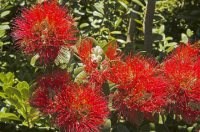 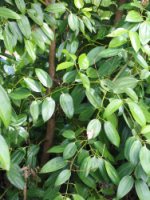  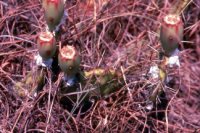 Christmas Bush, Cinnamon, Clove and Cochineal
Christmas Bush, Eupatorium
Odoratum, Compositea
Uses: An herbal tea of leaves used for colds. Cinnamon, Cinnamonmum (syn.
Zeylanicum), Verum Myrtacea
Uses: This spice is used similarly to its cousin Bois B'Inde (bay leaf). The difference is that the bark is used as the spice and has a better market then Bay leaf. It is used as a tea for chills, trapped wind, added to bath water, etc. It is also used to add flavour to cakes, ice cream, soups etc. Clove, Syzygium Aromaticum,
Myrtaceae Uses: Used in soups as a seasoning, clove
oil is used as a sedative for toothache, soak in cotton and insert in
cavity. Cochineal, Nopalea Cochenillifera,
Cactaceae
Uses: Mucilage used as a shampoo/conditioner, also as a poultice for boils and abscesses.  Our first experience of a cocoa tree with its pods sticking out from the trunk
Cocoa, Thembroma Cocoa,
Sterculiaceae Uses: Cocoa is Grenada second largest industry. It is used as a tea or beverage, in cakes in sun tan oils/lotions. It is believed that cocoa has a trace of caffeine.
Coolie Paw Paw, Garden Balsam, Ginger, Honeysuckle and Lemongrass Coolie Paw Paw, Momordica
Charantia, Cucurbitaceae
Uses: Leaf tea used for diabetes, high blood pressure, fevers, colds and menstrual pains. Large green fruits cooked as a vegetable. Ditay Paye, Capraria Biflora,
Scrophulariaceae
Uses: Leaves are boiled, strained and used for washing the eyes. Garden Balsam, Justica Pectoralis,
Acanthaceae (Zep sepanche, Carpenter grass)
Uses: A tea for colds, fever, hoarseness and chest pains. Ginger, Zingiber Officinale,
Zingiberaceae
Uses: A warm tea of rhizome used as a canninative for trapped wind, used as a seasoning, an oil known as gingerol is extracted from the rhizome and used for Rheumatism. Honeysuckle, Leonotis Neptiflolia,
Labitea (Lamineceae)
Uses: Leaf tea used for chest colds, hoarseness and fevers. Lemon Grass, Cymbopogon Citratus,
Graminea (Poacea) Uses: A pleasant tasting tea drunk for fevers and menstrual pain.
Malome, Chamaesyce Hirta (Euphorbia
Hirata), Euphorbiaceae
Nutmeg, Old Maid and Plantain
Nutmeg, Myritica Fragrans,
Myristicaceae Uses: This plant was brought to Grenada in 1843 by Hon. Frank Gurney from Banda. The oil is used in ointments for colds such as "Vicks Vapour Rub", in cakes, rum punches, etc. Nutmeg and mace are poisonous if taken in large amounts due to the presence of an aromatic oil called "Myristicin".
Old Maid (Peri winkle),
Catharanthus Roseus, Apocynaceae
Paw Paw, Carica Papaya,
Caricaceae
Petite Baune, Ocimum Grastissimum,
Lambiaceae (Libiatea)
Plantain, Plantago Major,
Plantaginceae
Each plant was well labeled
Poor Man Pork, Basil, Labiatae, Ocimum Basilicum Uses: Tenderising
meat and addition to stews, broths and
soups.
Santa Maria, Lippia Alba,
Verbenaceae
Sapote, Pouteria Sapola,
Sapotaceae
Shado Benie, Erynguim Foetidum,
Umbelelliferae
Sour Sop, Annoma Muricata,
Annonocea
Spanish Needle, Bidens Pilosa,
Compositae
Tonka Bean, Dipteryx Ordorata,
Sapotaceae
Wallcresses, Paperomia Pellucida,
Piperacea
Wild Coffee, Senna Accidentalis, Leguminosae
Zeba Pique, Nueroaleana Lobata,
Compositiae (Asteraceae)
ALL IN ALL A FASCINATING LOOK AT THE HEALING POWER OF NATURE
|


